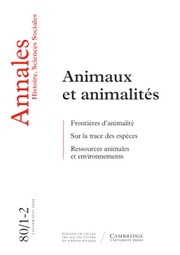No CrossRef data available.
Article contents
La logique de l'analyse interculturelle : Comment expliquer les exceptions*
Published online by Cambridge University Press: 11 October 2017
Extract
Dans l'histoire de l'anthropologie sociale ont été établis des centaines de rapports du type « lorsqu'il y a A, on trouve B » ; ou encore « lorsqu'il y a A, on trouve B, on trouve C… », rapports concernant par conséquent la relation fonctionnelle entre deux, trois, ou toute une série de phénomènes sociaux. Un rapport de ce type peut n'être qu'indiqué en passant ou même implicite dans l'argumentation, mais il peut être longuement développé et plus ou moins soigneusement vérifié.
Ce qui nous intéresse ici est que de tels rapports puissent n'être pas valables dans tous les cas, c'est-à-dire pour toutes les sociétés et qu'il existe toujours des exceptions à la règle, quelquefois même fort nombreuses.
- Type
- Chronique des Sciences Sociales
- Information
- Copyright
- Copyright © Les Éditions de l'EHESS 1967
Footnotes
Communication présentée par le Dr Köbben (Amsterdam) à l'International Social Science. Council, Round Table on Comparative Research, Paris (avril 1965). — Le texte original anglais de ce rapport sera publié dans le volume des Pressing du Colloque, à paraître chez Mouton et Cie.


